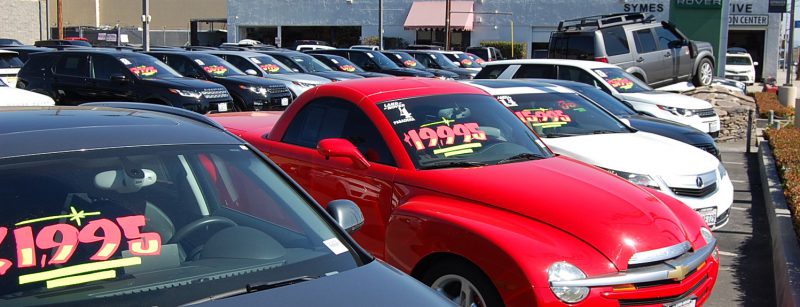Finding the perfect car can be an exciting yet daunting task, especially when navigating the vast selection at used car dealerships. Pre-owned vehicles offer a range of benefits, from cost savings to a diverse selection. To make the most informed decision, it’s essential to understand the process and what to look for when purchasing a used car.

The Advantages of Buying Used
Cost Savings
One of the most significant advantages of buying a used car is the substantial cost savings. New cars depreciate quickly, losing a significant portion of their value within the first few years. By opting for a pre-owned vehicle, you avoid this initial depreciation hit, often finding cars in excellent condition for a fraction of the price.
Variety of Choices
Used car dealerships offer an eclectic mix of models, makes, and years. This variety provides a broader selection, allowing you to find a vehicle that precisely matches your needs and preferences. Whether you’re searching for a compact sedan, a rugged SUV, or a luxury vehicle, used car lots are likely to have a diverse inventory.
Researching Your Options
Determining Your Budget
Before setting foot in a dealership, it’s crucial to determine your budget. Consider not only the purchase price but also additional costs such as insurance, taxes, registration, and future maintenance. Establishing a clear budget helps narrow down your options and ensures you don’t overspend.
Identifying Your Needs
Think about what you need from a vehicle. Are you looking for fuel efficiency, ample cargo space, advanced safety features, or a combination of these? By identifying your must-haves, you can more easily filter through the available options.
Inspecting the Vehicle
Exterior and Interior Examination
A thorough inspection of the car’s exterior and interior is essential. Look for any signs of damage, rust, or wear and tear. Check the paint condition, tire tread, and ensure all lights and signals are functioning properly. Inside, assess the upholstery, dashboard, and electronics. Make sure everything is in working order and that there are no unpleasant odors.
Mechanical Inspection
While a visual inspection is important, a mechanical check is crucial. If you’re not mechanically inclined, consider bringing a trusted mechanic or requesting a pre-purchase inspection. This check should cover the engine, transmission, brakes, and other critical components to ensure the vehicle is in good working condition.
Reviewing the Vehicle History
Vehicle History Report
A vehicle history report provides detailed information about the car’s past, including previous ownership, accident history, service records, and any reported damages. Services like Carfax and AutoCheck can supply these reports, helping you make an informed decision.
Service Records
Reviewing the service records can give you insight into how well the car has been maintained. Regular oil changes, tire rotations, and other routine services indicate a well-cared-for vehicle, which is likely to be more reliable.
Test Driving the Car
Performance and Comfort
A test drive is your opportunity to experience how the car handles and performs. Pay attention to the engine response, braking, and steering. Ensure the ride is smooth and that there are no unusual noises. Additionally, assess the comfort of the seats and the ergonomics of the controls.
Features and Functionality
During the test drive, test all the features of the car. Check the air conditioning, sound system, navigation, and any other amenities. Make sure everything is functioning as expected and that you feel comfortable with the car’s controls and features.
Negotiating the Best Deal
Understanding Market Value
Before entering negotiations, research the market value of the car you’re interested in. Websites like Kelley Blue Book and Edmunds can provide you with the fair market price based on the car’s make, model, year, and condition. This knowledge gives you leverage when negotiating with the dealer.
Trade-In Considerations
If you have a car to trade in, consider its value as well. Dealerships often offer trade-in deals, which can reduce the overall cost of your new vehicle. Be prepared to negotiate the trade-in value separately from the purchase price of the used car to ensure you get the best deal possible.
Finalizing the Purchase
Reviewing the Paperwork
Once you’ve agreed on a price, carefully review all the paperwork. This includes the sales contract, warranty information, and any financing agreements. Make sure you understand all the terms and conditions before signing.
Considering Extended Warranties
While many used cars come with limited warranties, you might want to consider purchasing an extended warranty for additional peace of mind. Extended warranties can cover major repairs and provide added security, especially for older vehicles.
Conclusion
Finding your perfect ride at a used car dealership involves careful research, thorough inspections, and savvy negotiations. By taking the time to understand your needs, evaluating each vehicle carefully, and being prepared to negotiate, you can drive away with a reliable, high-quality car that suits your budget and lifestyle. With the right approach, buying a used car can be a rewarding and cost-effective experience, ensuring you find the ideal vehicle for your needs.